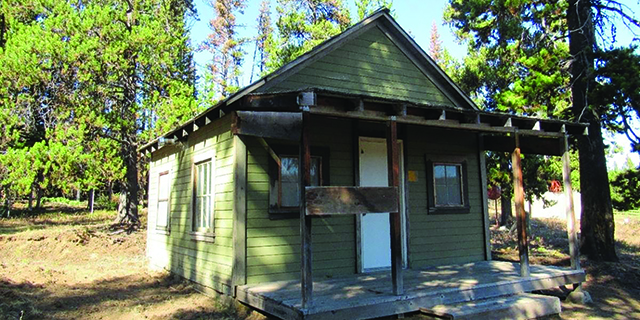Main Street: Indians are still here
Published 12:00 am Wednesday, May 15, 2019
Amidst the talk of immigration and border walls, we sometimes forget that our oldest immigration story—the coming of the Europeans to a continent inhabited by millions of people living in thousands of tribal groups with distinct languages, cultures, and religious and political systems—is still with us. The newcomers brought “Guns, Germs, and Steel,” the title of a book by Jared Diamond describing the rises, falls, and lateral movements of civilizations. In the decades immediately following Columbus’s landing in the offshore islands, diseases and violence killed as many as 80 percent of the indigenous peoples, and shipped gold, slaves, and foods back to the “old” world, inalterably changing both.
Yet Indians, the mistaken name that stuck, are still with us. In our country, the Nez Perce, and even the smaller band of them identified with Chief Joseph, who lived right here in the Wallowas, are still alive and active, scattered now over three reservations in three states, and in cities and towns across the country, but still with us.
Trending
It’s an agonizing story, but exhilarating too. My friend and teacher, the late Alvin Josephy, said that from that moment of first contact, the Indians had three choices: move—west of the Mississippi, onto reservations away from whites; assimilate—become white; or die. Many did die. In North America alone, a population of 12 or 15 million was reduced to a few hundred thousand by the late 1800s. In Mexico and Central America, a population of some 25 million was decimated by diseases, slavery, outright slaughter, and rape and appropriation of its women. Ditto South America.
In our country, the preferred official action and the one espoused by a majority of the new immigrants and their descendants, has been assimilation, bringing Indians into the white mainstream. The official “tools” for this have been “allotment” legislation, which divided tribal lands into individual farmsteads; missionaries, who imposed one form and another of Christianity; boarding schools, which took away language, clothing, customs, and even hair, and replaced them with books, vocational training, and marching bands; and federal regulations, which allowed reservation agents to ban languages, drums, and regalia.
With all of these obstacles, the survival of Indians and tribal identities is some kind of miracle. The miracle owes in part to sympathetic Euro-Americans, even, in some cases, missionaries who wrote down languages and described dances, ceremonies, and customs. It owes in part to the strength of the original economies of farming, fishing, and gathering—corn, potatoes, tomatoes, and scores of other plants native to the Americas continue on their own evolutionary journeys. It owes most to the resilience of the peoples, who have adapted to a changing world while maintaining customs and languages, treasuring old ways and traditional foods.
And in this they are a boon to all of us. It is hard to imagine a Columbia River salmon fishery today without the tribes and their dogged fights against canneries, fish transplants, dams, laws, and even science—or at least some scientists. I learned last summer, while preparing an exhibit on dams and salmon, that the scientific consensus from 1880—1938 was that Pacific salmon did not need natal streams, but would randomly swim up any stream. Indians knew otherwise.
Years ago, at a Fishtrap conference at Wallowa Lake, we gathered leading writers and scientists to talk about fire. Stephen J. Pyne, the foremost authority on fire in the country, told us that the original western Forest Service rangers who followed Indian custom, allowing low-level fires to burn and even encouraging them, were dubbed “Paiute foresters” by the German-educated Yale foresters who ran the government agency. Their “10 o’clock” policy soon demanded that all fires be extinguished the next day—and led to decades of fuel build-up that we live with today.
The author Charles Mann has described Indian use of fire for “farming” native plants and sequestering carbon for agriculture across the continent. And cracks in an agriculture dominated by mono-cultural farming are appearing, with crop rotations gaining new life, and attention to the ancient practice of “milpa” acknowledged. The Indians planted corn, beans, and squash together, and in some places such companion planting methods have kept soil and plants alive for centuries.
Trending
The Nez Perce are reintroducing lamprey—how will that reform the Columbia River ecosystem? And sockeye might find their way back to Wallowa Lake with a refurbished dam.
And on June 22, drummers, singers and Indian artists will celebrate Nez Perce artist Doug Hyde’s sculpture, called “The Return,” as it is installed at the Josephy Center on Joseph’s Main Street.
In the arts too, Indians—and the Nez Perce—are still here.









